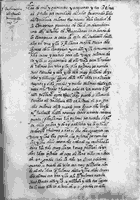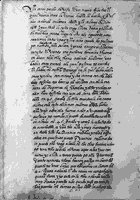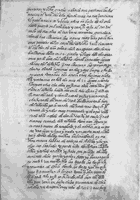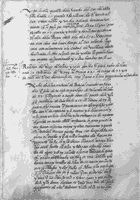Patagonia Bookshelf
First West-East crossing of the Strait of Magellan, 1553 [text in Spanish]
Report of Hernán Gallego, pilot
Historical Summary
Ferdinand Magellan's expedition (1520-22) is justly remembered as the first circumnavigation of the globe, and has been commemorated in the name given to the narrow strait that he found to pass from the Atlantic to the Pacific Ocean. In the following 30 years, only a few expeditions succeeded in repeating Magellan's feat, among these being García Jofré de Loaysa (1525) and Joao Affonso (1527?), while others were turned back by adverse weather. Attempts to cross from the Pacific to the Atlantic were even fewer, and complicated by the difficulty of locating the strait's western entrance.
Magellan's route, although a tour de force of exploration, was impractical for the important business of American colonization, which continued via the much shorter ocean crossing pioneered by Columbus between Spain and the Caribbean. Consequently, Spanish settlement on the Pacific coast proceeded in a north-to-south direction: eventually, by 1540, there was a permanent military presence at Santiago, central Chile, in latitude 33°S. The local governor, Pedro de Valdivia, pursued an active policy of conquest, establishing cities on the Pacific coast at Concepción, 36°S, and at Valdivia, 39°S. His aim was to reach the Strait of Magellan, and use that route for contacts with Spain.
The expedition described in this manuscript started from Concepción in 1553, sailing southward. Valdivia's instructions were "to discover [the western entrance of] the strait of Magellan", and it is clear from the text that this objective was achieved. The pilot Hernán Gallego successfully located the correct channel, and completed the traverse through to the Atlantic in four days. After entering the Pacific on the return journey, the ship was driven as far as 55°S, before eventually arriving safely at the port of Valdivia. We know from other sources that Francisco de Ulloa, head of the expedition, lost contact with Gallego, and returned home without entering the Strait: before this text came to light, this was the accepted result of the expedition.
Pedro de Valdivia's vision of opening up a west-to-east route for direct communication between Chile and Spain was validated, but he did not live to hear the news. Before the expedition returned, Valdivia was captured and killed by the Araucanians (1553). The resulting political instability in Chile was only calmed in 1557, when the Viceroy of Peru sent his son García Hurtado de Mendoza to take command as governor. It seems probable that the present report was eclipsed by these events, then archived under a cloak of secrecy to prevent its disclosure to rival European naval powers, and lost to public view until the late 20th century.
One incident deserves special mention: Gallego showed a practical interest in the natives living along the Strait by taking eight of them back to his house in Chile, intending to learn first-hand the details of their homeland. This stands in marked contrast to certain 19th century travellers, who treated the natives more as biological curiosities, for exhibition in the northern hemisphere.
Source: US Library of Congress, Rare Books and Special Collections Division, The Hans P. Kraus Collection of Sir Francis Drake, Catalogue Item 1 "Memoria de la Costa Rica del Mar del norte [with three other narratives]"



